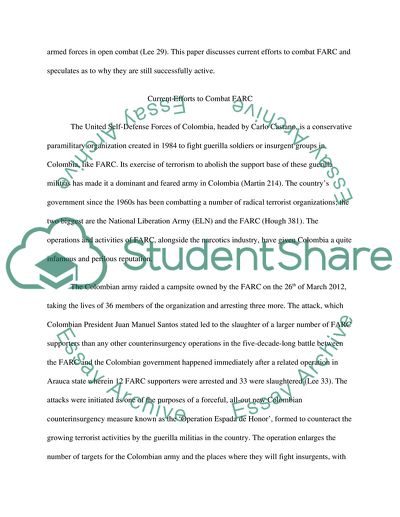Cite this document
(“The Revolutionary Armed Forces of Colombia (FARC) Research Paper”, n.d.)
Retrieved from https://studentshare.org/social-science/1665827-case-study-on-the-farc
Retrieved from https://studentshare.org/social-science/1665827-case-study-on-the-farc
(The Revolutionary Armed Forces of Colombia (FARC) Research Paper)
https://studentshare.org/social-science/1665827-case-study-on-the-farc.
https://studentshare.org/social-science/1665827-case-study-on-the-farc.
“The Revolutionary Armed Forces of Colombia (FARC) Research Paper”, n.d. https://studentshare.org/social-science/1665827-case-study-on-the-farc.


